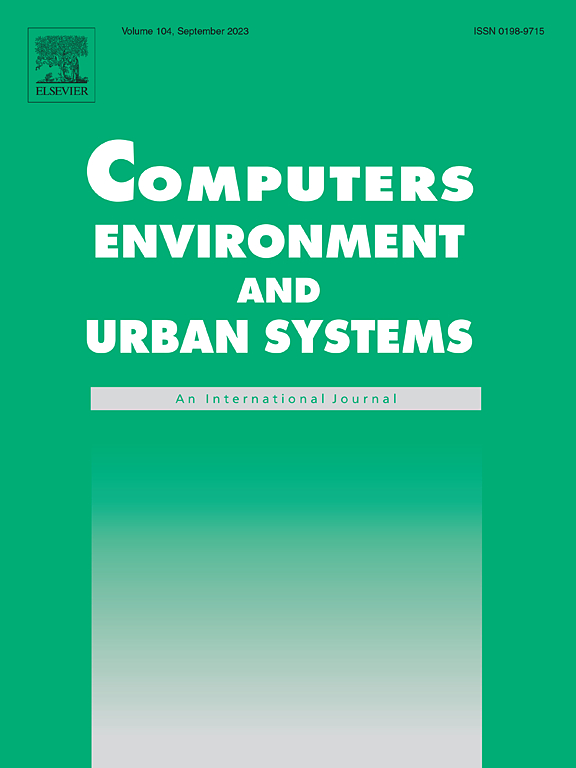Simulation and exposure assessment of hourly traffic noise in Hong Kong using a minimal error iterative model based on diversion strategies
IF 7.1
1区 地球科学
Q1 ENVIRONMENTAL STUDIES
Computers Environment and Urban Systems
Pub Date : 2025-04-28
DOI:10.1016/j.compenvurbsys.2025.102300
引用次数: 0
Abstract
Traffic noise poses a globally significant environmental threat to urban livability, particularly in high-density areas where conventional noise assessment methods struggle to capture dynamic spatio-temporal variations. The Minimal Error Iterative Model based on Diversion Strategies (MEI-DS) was proposed in this study to derive high-resolution traffic flow networks with overcoming temporal granularity limitations. A case study in Hong Kong, China, a high-density building environment city was conducted to examine the model performance, with an average relative error of 0.48 %. Afterwards, a novel noise assessment framework was developed by integrating MEI-DS-generated flows with noise source model and 3D noise propagation model. This approach reveals striking spatiotemporal heterogeneities: Peak noise levels occur between 08:00–09:00 on weekdays, while Saturdays show persistently high noise levels from 09:00 to 20:00. Sundays exhibit minimal diurnal noise fluctuations. Multi-scale assessments (city-district-building-individual) reveal 85.9 % of the population experiences noise exposure exceeding WHO-recommended thresholds. This study offers actionable insights to inform urban planning and develop health-centric strategies for mitigating traffic noise, and the proposed model can also be transferred to other regions with strong potential to address the impact of traffic noise on environmental health.
利用基于改道策略的最小误差迭代模型模拟及评估香港每小时交通噪音
交通噪声对城市宜居性构成了全球性的重大环境威胁,特别是在传统噪声评估方法难以捕捉动态时空变化的高密度地区。本文提出了基于导流策略的最小误差迭代模型(MEI-DS),克服了时间粒度的限制,获得了高分辨率的交通流网络。以中国香港高密度建筑环境城市为例,对模型的性能进行了检验,平均相对误差为0.48%。然后,将mei - ds生成的流与噪声源模型和三维噪声传播模型相结合,建立了新的噪声评价框架。该方法揭示了显著的时空异质性:峰值噪声水平出现在工作日的08:00-09:00之间,而周六的09:00 - 20:00持续显示高噪声水平。星期天的噪音波动最小。多尺度评估(城市-地区-建筑物-个人)显示,85.9%的人口经历的噪声暴露超过了世卫组织建议的阈值。该研究为城市规划和制定以健康为中心的交通噪声缓解策略提供了可操作的见解,并且所提出的模型也可以推广到其他有潜力解决交通噪声对环境健康影响的地区。
本文章由计算机程序翻译,如有差异,请以英文原文为准。
求助全文
约1分钟内获得全文
求助全文
来源期刊

Computers Environment and Urban Systems
Multiple-
CiteScore
13.30
自引率
7.40%
发文量
111
审稿时长
32 days
期刊介绍:
Computers, Environment and Urban Systemsis an interdisciplinary journal publishing cutting-edge and innovative computer-based research on environmental and urban systems, that privileges the geospatial perspective. The journal welcomes original high quality scholarship of a theoretical, applied or technological nature, and provides a stimulating presentation of perspectives, research developments, overviews of important new technologies and uses of major computational, information-based, and visualization innovations. Applied and theoretical contributions demonstrate the scope of computer-based analysis fostering a better understanding of environmental and urban systems, their spatial scope and their dynamics.
 求助内容:
求助内容: 应助结果提醒方式:
应助结果提醒方式:


